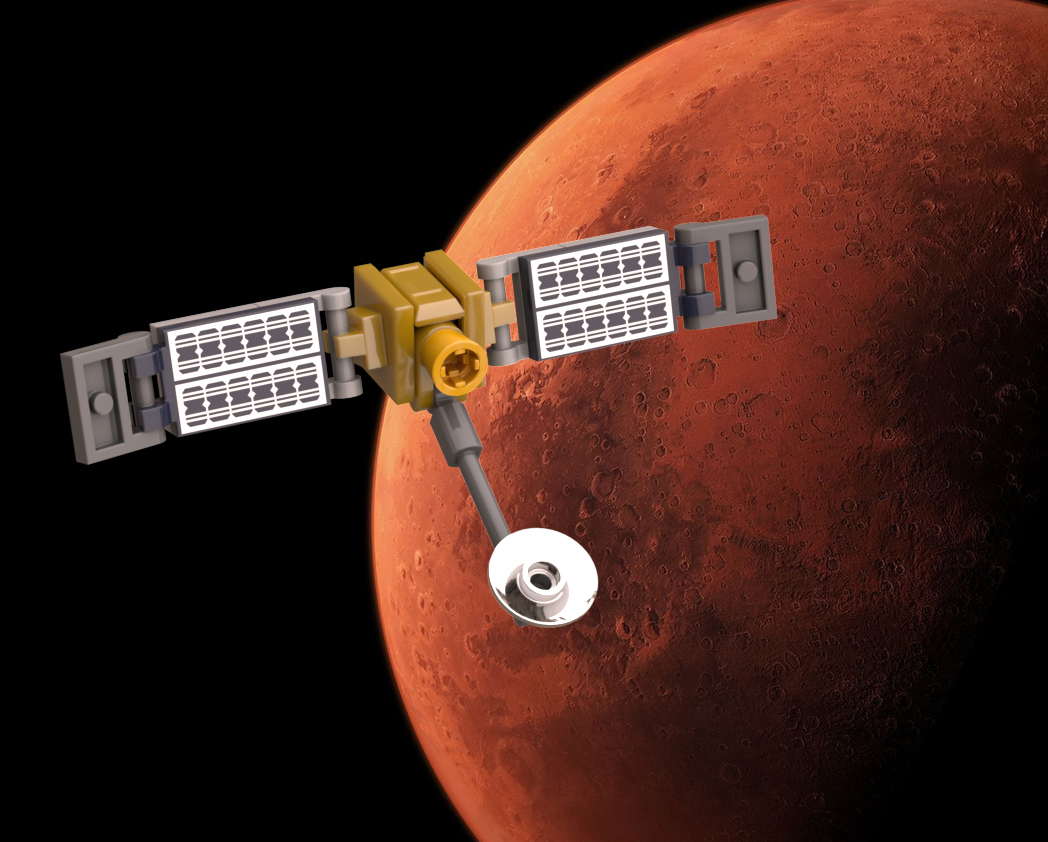
LEGO Designer:
Dan Fallon (phreaddee)
Designed: February 2021
Categories:
All,
Payloads,
Probes and Satellites,
Probes and Satellites of Mars
Mars Global Surveyor (MGS) was an American robotic space probe developed by NASA’s Jet Propulsion Laboratory and launched November 1996. MGS was a global mapping mission that examined the entire planet, from the ionosphere down through the atmosphere to the surface. As part of the larger Mars Exploration Program, Mars Global Surveyor performed monitoring relay for sister orbiters during aerobraking, and it helped Mars rovers and lander missions by identifying potential landing sites and relaying surface telemetry.
It completed its primary mission in January 2001 and was in its third extended mission phase when, on 2 November 2006, the spacecraft failed to respond to messages and commands. A faint signal was detected three days later which indicated that it had gone into safe mode. Attempts to recontact the spacecraft and resolve the problem failed, and NASA officially ended the mission in January 2007.
Mars Global Surveyor achieved the following science objectives during its primary mission:
- Characterize the surface features and geological processes on Mars.
- Determine the composition, distribution and physical properties of surface minerals, rocks and ice.
- Determine the global topography, planet shape, and gravitational field.
- Establish the nature of the magnetic field and map the crustal remnant field.
- Monitor global weather and the thermal structure of the atmosphere.
- Study interactions between Mars’ surface and the atmosphere by monitoring surface features, polar caps that expand and recede, the polar energy balance, and dust and clouds as they migrate over a seasonal cycle.
Mars Global Surveyor also achieved the following goals of its extended mission:
- Continued weather monitoring to form a continuous set of observations with NASA’s Mars Reconnaissance Orbiter, which reached Mars in March 2006.
- Imaging of possible landing sites for the 2007 Phoenix spacecraft, and the 2011 Curiosity rover.
- Observation and analysis of key sites of scientific interest, such as sedimentary-rock outcrop sites.
- Continued monitoring of changes on the surface due to wind and ice.
Further Information and References
Designer Notes
Part count: bricks, lots.
| Unit | width | length | height |
|---|---|---|---|
| Studs | |||
| Inches | |||
| Centimetres |